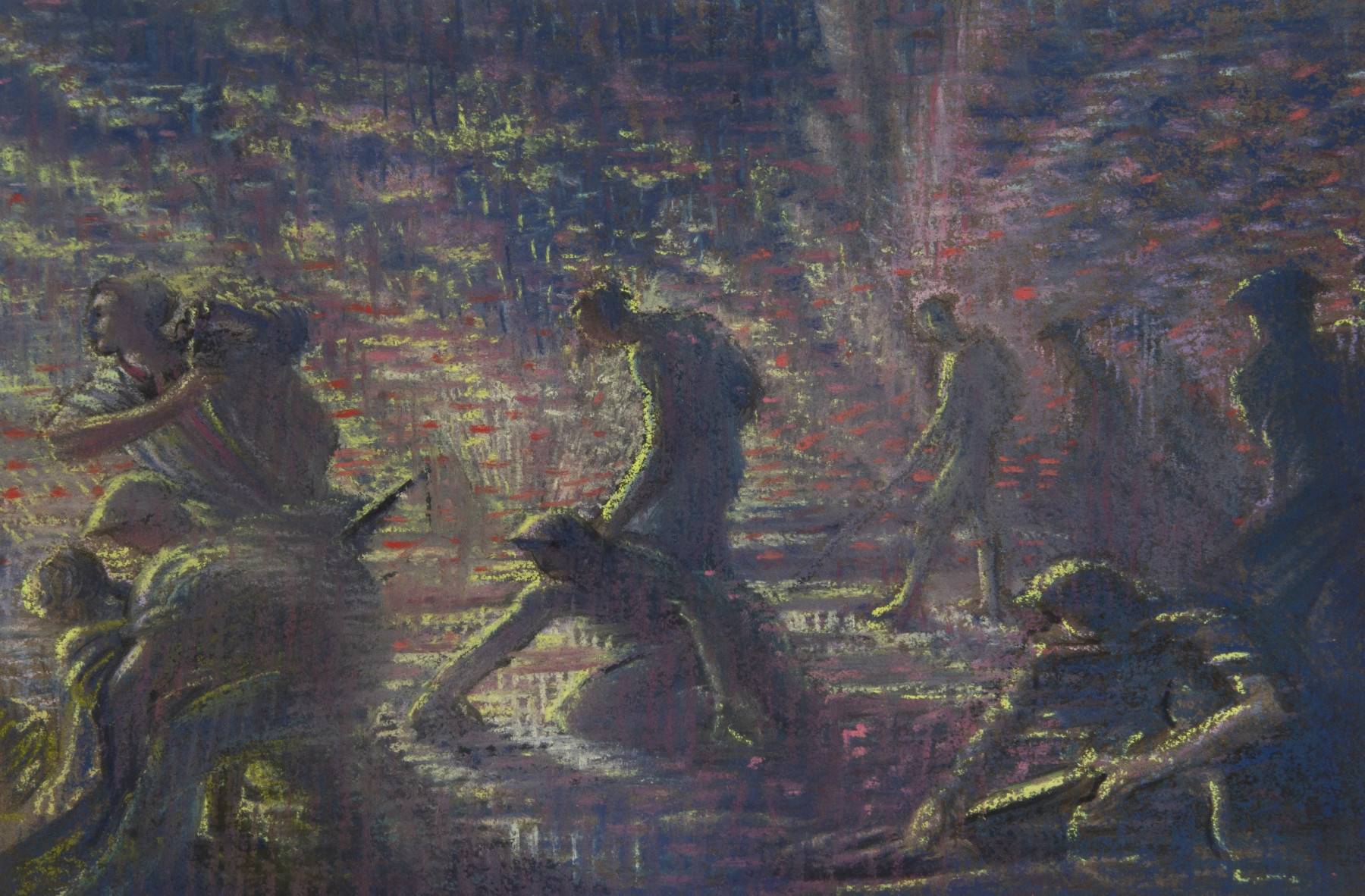
(click image to enlarge)
The present work is one of at least two similar compositions that Thomas Monnington produced in pastel and chalk during the Second World War. The other version (in a private collection) has been given the completely different, if less convincing, title of ARP Wardens Rescuing Casualties of Bomb Blast. This discrepancy suggests that there is some uncertainty as to the subject. However, close scrutiny of the image reveals that the majority of the figures are engaging with the ground in a delicate operation, and some appear to be holding mine detectors.
The earliest portable mine detector, invented by the Polish signals officer, Jósef Kosacki, was used for the first time in action by the allied Eighth Army during the Second Battle of El Alamein, in Egypt, in October 1942. Handled by mine sweepers, which included Reconnaissance Corps troops and sappers, these detectors helped double the speed of detection and removal of the many mines that had been laid by the Axis troops led by Generalfeldmarschall Erwin Rommel. As a result, they played a key role in a decisive victory of the war.
Thomas Monnington is not known to have been present at the Second Battle of El Alamein, or to have visited North Africa at all during the war. Therefore, it seems more likely that he based this drawing (and its pair) on reports, and possibly sketches by others, of the demining operation.
Monnington spent the early years of the war, including 1942, as a member of the design team of the Civil Defence Camouflage Operation Establishment, based at Leamington Spa, in Warwickshire. During this time, he was chiefly responsible for the design of camouflage for aircraft production airfields. In 1943, he was appointed an official war artist with Royal Air Force, and documented war from the air. Latterly, in 1944-45, he was in Holland, with the 2nd Tactical Air Force, drawing pioneer mobile radar equipment.